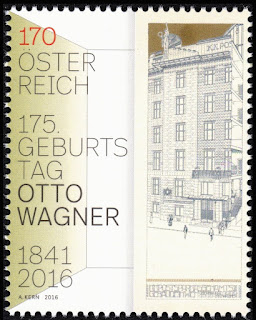Here are some events that happened on April 11th. It could be an event or a person that died or was born on that day
1626 Died: Marino Ghetaldi, Ragusan mathematician and physicist (b. 1568)
Marino Ghetaldi (Latin: Marinus Ghetaldus; Croatian: Marin Getaldić; 2 October 1568 – 11 April 1626) was a Ragusan scientist. A mathematician and physicist who studied in Italy, England and Belgium, his best results are mainly in physics, especially optics, and mathematics. He was one of the few students of François Viète.
Born into the Ghetaldi noble family, he was one of six children. He was known for the application of algebra in geometry and his research in the field of geometrical optics on which he wrote 7 works including the Promotus Archimedus (1603) and the De resolutione et compositione mathematica (1630). He also produced a leaflet with the solutions of 42 geometrical problems, Variorum problematum colletio, in 1607 and set grounds of algebraization of geometry. His contributions to geometry had been cited by Dutch physicist Christiaan Huygens and Edmond Halley, who calculated the orbit of what is known as Halley's comet, in England.
Ghetaldi was the constructor of the parabolic mirror (66 cm in diameter), kept today at the National Maritime Museum in London. He was also a pioneer in making conic lenses. During his sojourn in Padua he met Galileo Galilei, with whom he corresponded regularly. He was a good friend to the French mathematician François Viète. He was offered the post of professor of mathematics in Old University of Leuven in Belgium, at the time one of the most prestigious university centers in Europe.
He was also engaged in politics and was the envoy of the Republic of Ragusa in Constantinople in 1606 as well as the member of the Great and Small Council, the political bodies of the Republic. He was married to Marija Sorkočević, who died giving birth to their third daughter; they had three daughters: Anica, Franica and Marija.
Croatian stamp depicting Marino Ghetaldi
1887 Born: Jamini Roy, Indian painter (d. 1972)
Jamini Roy (14 April 1887 – 24 April 1972) was an Indian painter. He was honoured with the State award of Padma Bhushan in 1954. He was one of the most famous pupils of Rabindranath Tagore, whose artistic originality and contribution to the emergence of modern art in India remains unquestionable.
Roy began his career as a commissioned portrait painter. Somewhat abruptly in the early 1920s, he gave up commissioned portrait painting in an effort to discover his own.
Roy changed style from his academic Western training and featured a new style based on Bengali folk traditions.
Roy is also described as an art machine because he produced 20,000 paintings in his lifetime which is about 10 paintings daily but made sure his artistic aims remained the same. He always targeted to the ordinary middle class as the upholder of art however he was thronged by the rich. Keeping his respect to the middle class reflected on his critical views; he believed that ordinary people were more important than governments because they were the voice of his art.
His underlying quest was threefold: to capture the essence of simplicity embodied in the life of the folk people; to make art accessible to a wider section of people; and to give Indian art its own identity. Jamini Roy's paintings were put on exhibition for the first time in the British India Street of Calcutta (Kolkata) in 1938. During the 1940s, his popularity touched new highs, with the Bengali middle class and the European community becoming his main clientele. In 1946, his work was exhibited in London and in 1953, in the New York City. He was awarded the Padma Bhushan in 1954. His work has been exhibited extensively in international exhibitions and can be found in many private and public collections such as the Victoria and Albert Museum, London. He spent most of his life living and working in Calcutta. Initially he experimented with Kalighat paintings but found that it has ceased to be strictly a "patua" and went to learn from village patuas. Consequently, his techniques as well as subject matter was influenced by traditional art of Bengal.
He preferred himself to be called a patua. Jamini Roy died in 1972. He was survived by four sons and a daughter. Currently his successors (daughters-in-law and grand children and their children) stay at the home he had built in Ballygunge Place, Kolkata. His works can be found in various museums and galleries across the globe.
Indian stamps depicting a painting by Jamini Roy
1918 Died: Otto Wagner, Austrian architect and urban planner (b. 1841)
Otto Koloman Wagner (13 July 1841 – 11 April 1918) was an Austrian architect and urban planner. He was a leading member of the Vienna Secession movement of architecture, founded in 1897, and the broader Art Nouveau movement. All of his works are found in his native city of Vienna, and illustrate the rapid evolution of architecture during the period. His early works were inspired by classical architecture. By mid-1890s, he had already designed several buildings in what became known as the Vienna Secession style. Beginning in 1898, with his designs of Vienna Metro stations, his style became floral and Art Nouveau, with decoration by Koloman Moser. His later works, 1906 until his death in 1918, had geometric forms and minimal ornament, clearly expressing their function. They are considered predecessors to modern architecture.
Austrian stamps depicting Otto Wagner or his works





No comments:
Post a Comment